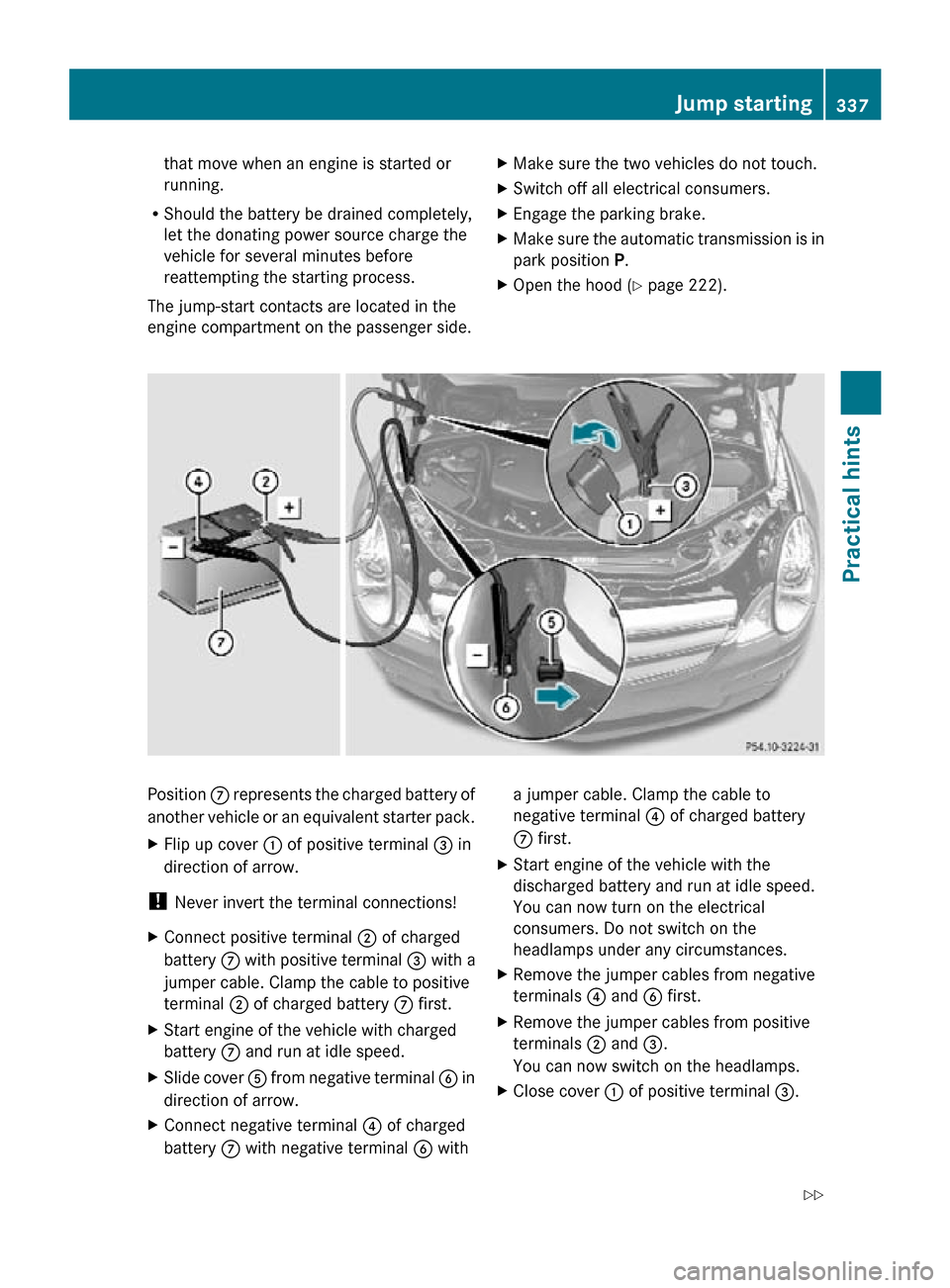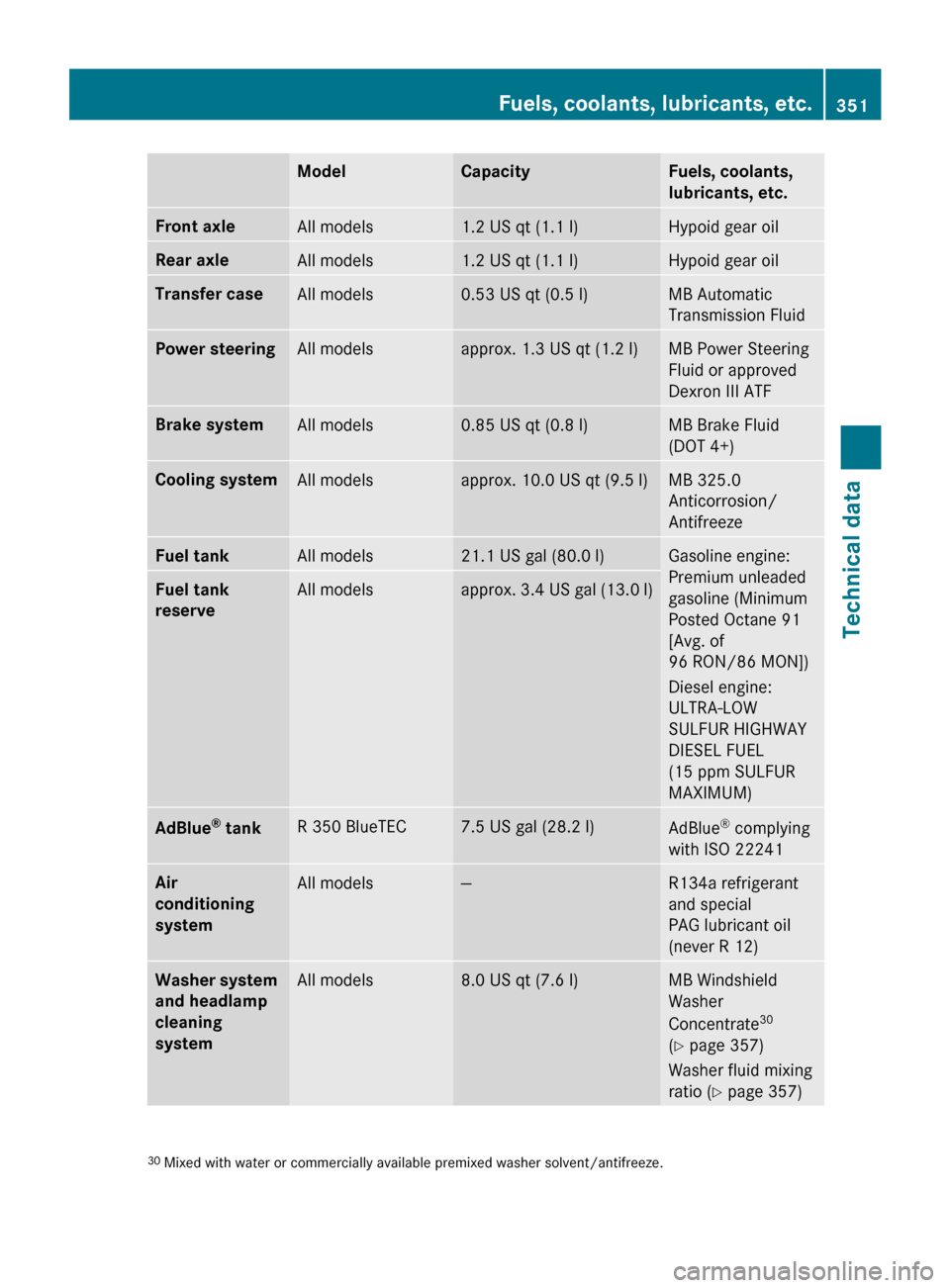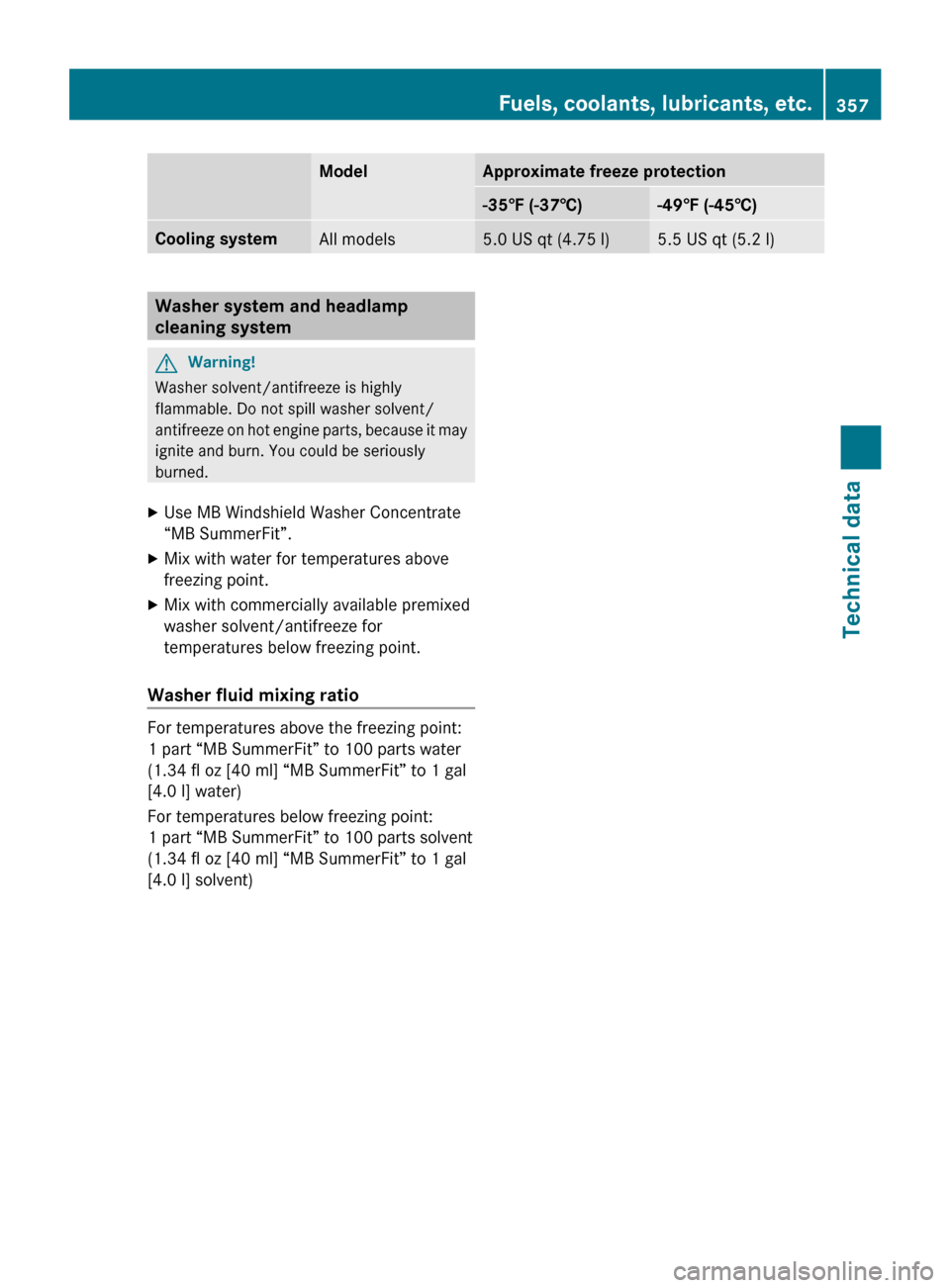Page 315 of 364
Bulbs
You can replace the following bulbs yourself: Halogen headlamps Type
:
Turn signal lamp: 3457A
; Parking and standing lamp: W 5 W
= Low-beam lamp: H7 55 W
? High-beam lamp/High-beam flasher
lamp: H7 55 W Bi-Xenon headlamps Type
:
Turn signal lamp: 3457A
; Parking and standing lamp: W 5 W
= High-beam flasher lamp/High-beam
flasher spot lamp: H7 55 W Replacing bulbs
313Practical hints
251_AKB; 4; 52, en-US
d2ureepe, Version: 2.11.8.1 2009-03-23T09:22:52+01:00 - Seite 313 Z
Page 317 of 364

Example illustration: Passenger side headlamp
:
Housing cover for low-beam and high-
beam halogen or Bi-Xenon headlamp G
Warning!
Do not remove the cover for the Bi-Xenon
headlamp. Because of high voltage in Xenon
lamps, it is dangerous to replace the bulb or
repair the lamp and its components. It is
recommended to have such work done by a
qualified technician. ;
Bulb socket for front turn signal lamp bulb ;
Bulb socket for front turn signal lamp bulb
= Bulb socket for low-beam headlamp bulb
(halogen headlamps only)
? Bulb socket for high-beam headlamp/
high-beam flasher bulb
Low-beam bulb (halogen headlamps
only) X
Turn housing cover : counterclockwise
and remove it.
X Turn bulb socket = with the bulb
counterclockwise and remove it.
X Pull the bulb out of bulb socket =.
X Gently press the new bulb into bulb socket
=.
X Place bulb socket = back into the housing
and turn it clockwise until it engages.
X Align housing cover : and turn it
clockwise until it engages.
High-beam and high-beam flasher bulb
(halogen headlamps only) X
Turn housing cover : counterclockwise
and remove it.
X Turn bulb socket ? with the bulb
counterclockwise and remove it.
X Pull the bulb out of bulb socket ?.
X Gently press the new bulb into bulb
socket ?. Replacing bulbs
315Practical hints
251_AKB; 4; 52, en-US
d2ureepe, Version: 2.11.8.1 2009-03-23T09:22:52+01:00 - Seite 315 Z
Page 339 of 364

that move when an engine is started or
running.
R Should the battery be drained completely,
let the donating power source charge the
vehicle for several minutes before
reattempting the starting process.
The jump-start contacts are located in the
engine compartment on the passenger side. X
Make sure the two vehicles do not touch.
X Switch off all electrical consumers.
X Engage the parking brake.
X Make sure the automatic transmission is in
park position P.
X Open the hood (Y page 222). Position
C represents the charged battery of
another vehicle or an equivalent starter pack.
X Flip up cover : of positive terminal = in
direction of arrow.
! Never invert the terminal connections!
X Connect positive terminal ; of charged
battery C with positive terminal = with a
jumper cable. Clamp the cable to positive
terminal ; of charged battery C first.
X Start engine of the vehicle with charged
battery C and run at idle speed.
X Slide cover A from negative terminal B in
direction of arrow.
X Connect negative terminal ? of charged
battery C with negative terminal B with a jumper cable. Clamp the cable to
negative terminal ? of charged battery
C first.
X Start engine of the vehicle with the
discharged battery and run at idle speed.
You can now turn on the electrical
consumers. Do not switch on the
headlamps under any circumstances.
X Remove the jumper cables from negative
terminals ? and B first.
X Remove the jumper cables from positive
terminals ; and =.
You can now switch on the headlamps.
X Close cover : of positive terminal =. Jump starting
337Practical hints
251_AKB; 4; 52, en-US
d2ureepe, Version: 2.11.8.1 2009-03-23T09:22:52+01:00 - Seite 337 Z
Page 353 of 364

Model Capacity Fuels, coolants,
lubricants, etc.
Front axle
All models 1.2 US qt (1.1 l) Hypoid gear oil
Rear axle
All models 1.2 US qt (1.1 l) Hypoid gear oil
Transfer case
All models 0.53 US qt (0.5 l) MB Automatic
Transmission Fluid
Power steering
All models approx. 1.3 US qt (1.2 l) MB Power Steering
Fluid or approved
Dexron III ATF
Brake system
All models 0.85 US qt (0.8 l) MB Brake Fluid
(DOT 4+)
Cooling system
All models approx. 10.0 US qt (9.5 l) MB 325.0
Anticorrosion/
Antifreeze
Fuel tank
All models 21.1 US gal (80.0 l) Gasoline engine:
Premium unleaded
gasoline (Minimum
Posted Octane 91
[Avg. of
96 RON/86 MON])
Diesel engine:
ULTRA-LOW
SULFUR HIGHWAY
DIESEL FUEL
(15 ppm SULFUR
MAXIMUM)
Fuel tank
reserve
All models approx. 3.4 US gal (13.0 l)
AdBlue
®
tank R 350 BlueTEC 7.5 US gal (28.2 l)
AdBlue
®
complying
with ISO 22241 Air
conditioning
system
All models — R134a refrigerant
and special
PAG lubricant oil
(never R 12)
Washer system
and headlamp
cleaning
system
All models 8.0 US qt (7.6 l) MB Windshield
Washer
Concentrate
30
(Y page 357)
Washer fluid mixing
ratio ( Y page 357) 30
Mixed with water or commercially available premixed washer solvent/antifreeze. Fuels, coolants, lubricants, etc.
351Technical data
251_AKB; 4; 52, en-US
d2ureepe, Version: 2.11.8.1 2009-03-23T09:22:52+01:00 - Seite 351 Z
Page 359 of 364

Model Approximate freeze protection
-35‡ (-37†) -49‡ (-45†)
Cooling system
All models 5.0 US qt (4.75 l) 5.5 US qt (5.2 l)
Washer system and headlamp
cleaning system
G
Warning!
Washer solvent/antifreeze is highly
flammable. Do not spill washer solvent/
antifreeze
on hot engine parts, because it may
ignite and burn. You could be seriously
burned.
X Use MB Windshield Washer Concentrate
“MB SummerFit”.
X Mix with water for temperatures above
freezing point.
X Mix with commercially available premixed
washer solvent/antifreeze for
temperatures below freezing point.
Washer fluid mixing ratio For temperatures above the freezing point:
1 part “MB SummerFit” to 100 parts water
(1.34 fl oz [40 ml] “MB SummerFit” to 1 gal
[4.0 l] water)
For temperatures below freezing point:
1 part “MB SummerFit” to 100 parts solvent
(1.34 fl oz [40 ml] “MB SummerFit” to 1 gal
[4.0 l] solvent) Fuels, coolants, lubricants, etc.
357
Technical data
251_AKB; 4; 52, en-US
d2ureepe, Version: 2.11.8.1 2009-03-23T09:22:52+01:00 - Seite 357 Z